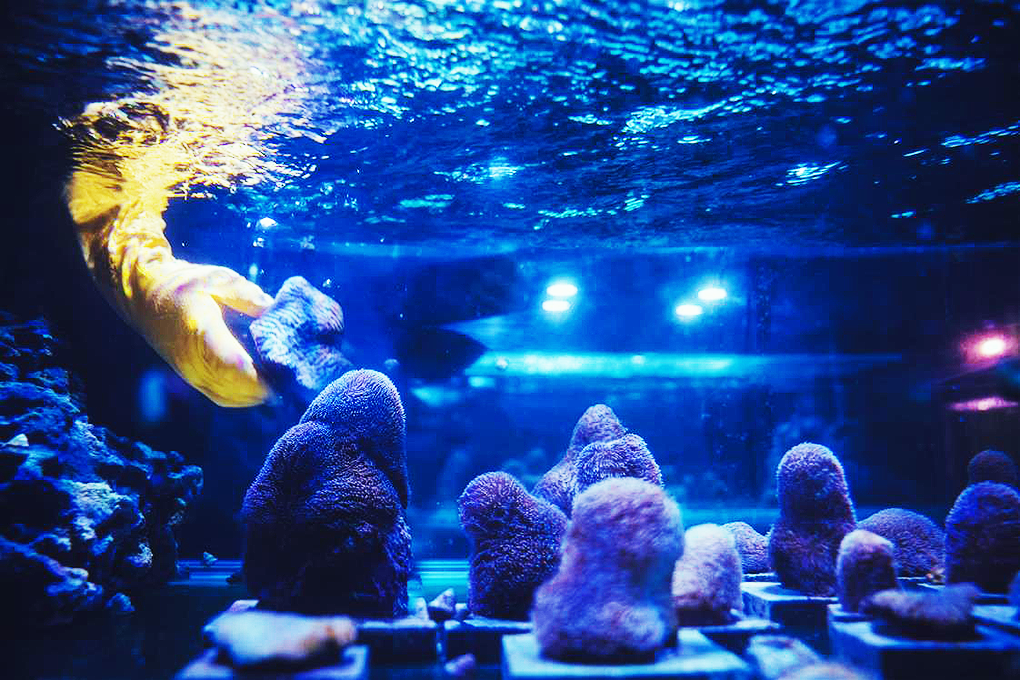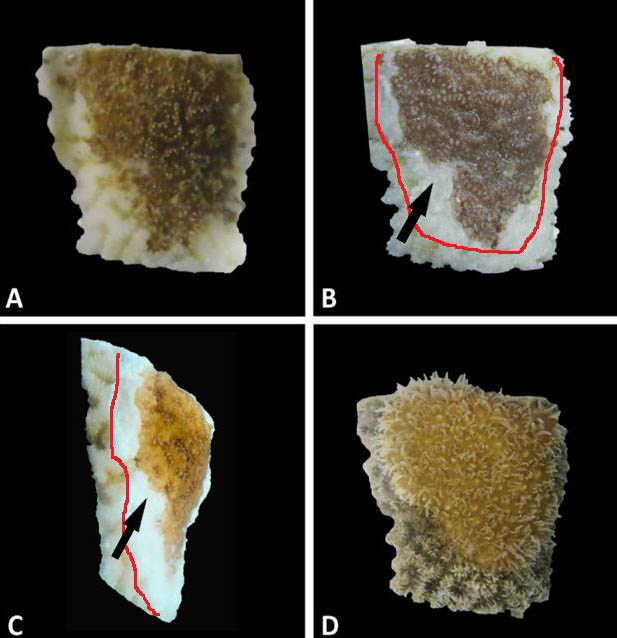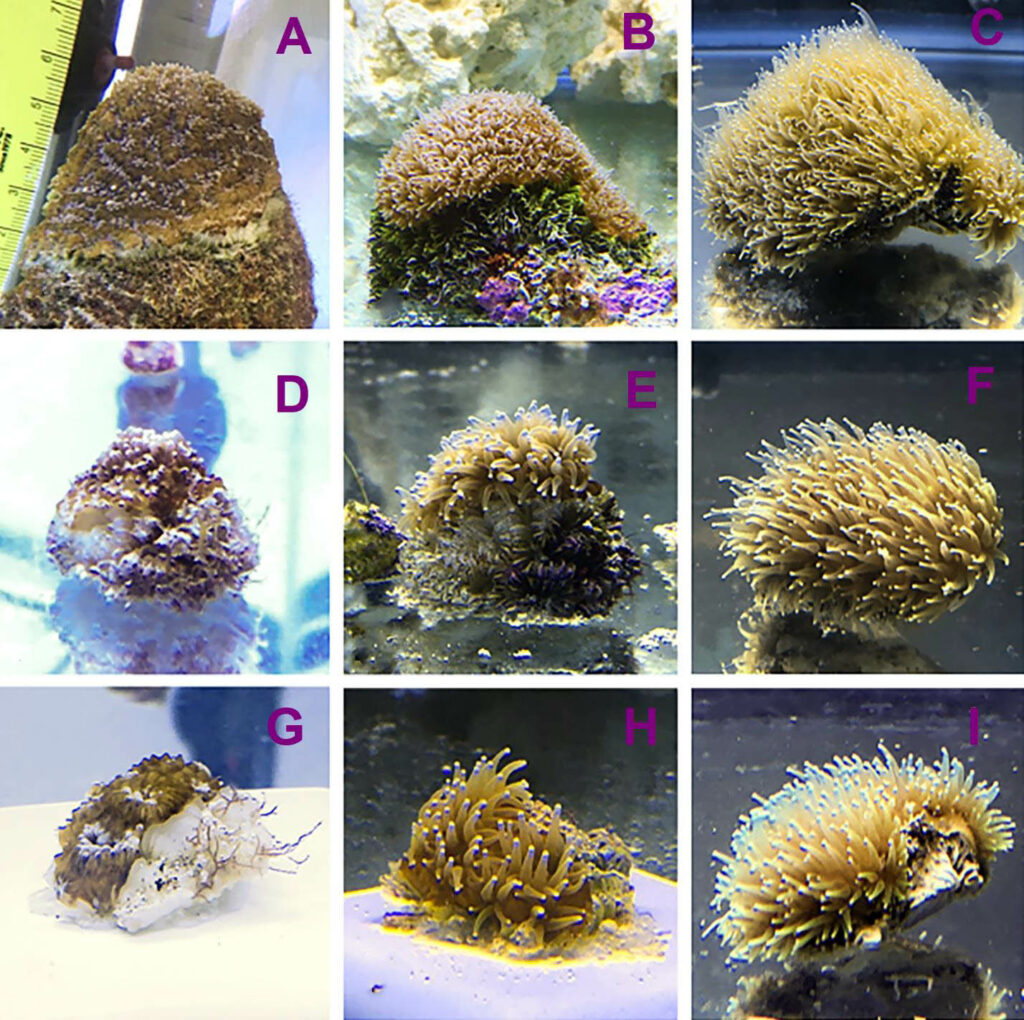
NOAA researchers find success in exploratory treatments for Stony Coral Tissue Loss Disease — New Proprietary Ointment Available to Researchers from Florida’s Ocean Alchemists
Scientists from NOAA’s National Centers for Coastal Ocean Science (NCCOS) have successfully treated and rehabilitated diseased Pillar Coral rescued from the Florida Reef Tract.
First detected near Miami in 2014, Stony Coral Tissue Loss Disease (SCTLD) has since spread throughout the Florida Keys and much of the Caribbean. The disease is infecting and killing roughly half of the region’s hard coral species, including Pillar Coral (Dendrogyra cylindrus) — an iconic stony coral species listed as threatened under the Endangered Species Act. Florida’s wild Pillar Coral population is now less than six percent of its known population in 2014.
Research diver documents stony coral tissue loss disease in pillar coral along Florida Reef Tract, 2019.
Dr. Cheryl Woodley and her team at NCCOS are working to save Pillar Coral from the disease. Multi-institutional rescue missions have been collecting various hard coral species for safekeeping at onshore and offshore nursery facilities. Diseased Pillar Coral from different reefs have been going to Dr. Woodley’s lab for treatment. Seven rescue events from 2016 to 2019, along with acquisitions transferred from two other institutions, provided the lab in Charleston, South Carolina, with Dendrocyra cylindrus fragments for experimental treatment and rehabilitation.
Based on their trials of different treatments, the team developed a topical antibiotic-infused paste that can be applied directly to SCTLD lesions in aquarium settings to arrest tissue loss and prevent coral death. Interested aquarists can find the new treatment methods and results available in an open-access publication. (See below.)

The researchers successfully treated 176 specimens from the 208 coral fragments they received. These small remnants of once-tall, stately Pillar Corals, now await a time when they can be used to restore the species to the wild.
The team’s success prompted wider-scale development of a topical antibiotic paste that could be applied to SCTLD-infected corals in the wild. In partnership with CoreRx Pharmaceuticals in Clearwater, Florida and Ocean Alchemists in Tampa, the resulting product is now being used on over 20 coral species throughout the region to save colonies infected with Stony Coral Tissue Loss disease.
Ocean Alchemists is taking orders for the new ointment, but so far it is being made available only to bona fide researchers. Says the company: “CoralCure Ointment Base2B which when mixed with Amoxicillin Trihydrate has proven to have more than 85% efficacy at treating Stony Coral Tissue Loss Disease (SCTLD) when applied on affected lesions.”
For reef aquarists who from time to time must deal with tissue loss issues in their stony corals, there will be a wait for an over-the-counter version to be brought to market.

The Florida Reef Tract is the third-largest coral barrier reef system in the world. The reef supports fisheries, tourism, and recreation activities that generate hundreds of millions of dollars annually.
References
NOAA Publication: Exploratory Treatments for Stony Coral Tissue Loss Disease: Pillar Coral (Dendrogyra cylindrus)
https://repository.library.noaa.gov/view/noaa/27433
Ocean Alchemists
https://www.oceanalchemists.com/





Is this the same as what aquarists call RTN and STN?
The Florida reefs are NOT a barrier reef. The three largest barrier reefs are the GBR, New Caledonia, and Belize. Florida coral reefs are tiny, and separated by long stretches of “hardgrounds” which have very few hard corals. They are totally different from a barrier reef. Scattered tiny reefs don’t make a barrier reef.